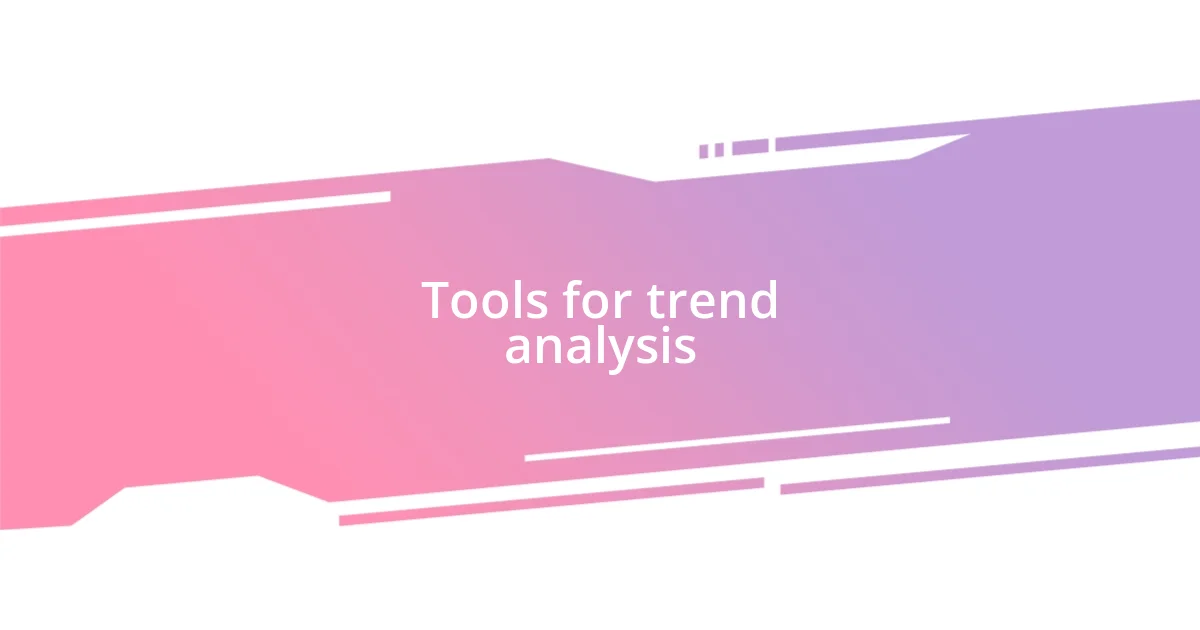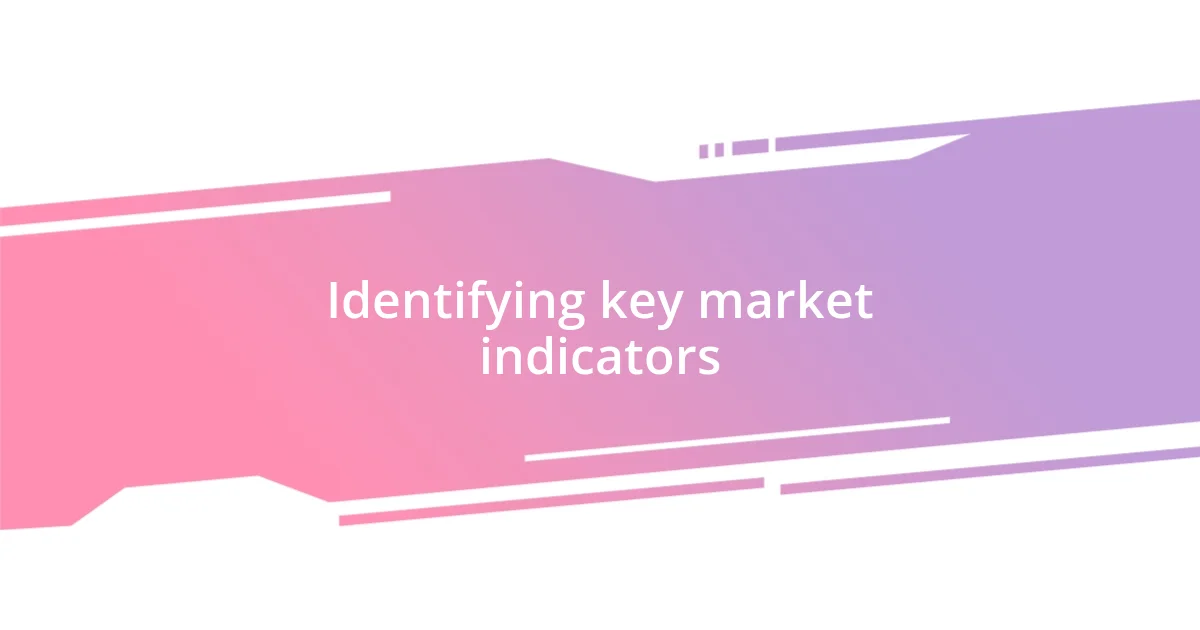Key takeaways:
- Investor sentiment plays a crucial role in ICO market dynamics, impacting project success and community engagement.
- Utilizing tools like Google Trends and CoinGecko enhances market analysis, providing valuable insights into trends and investor behavior.
- Interpretation of market sentiment, regulatory news, and competitor performance are vital for informed investment decisions and developing a strategic investment approach.

Understanding ICO market dynamics
Diving into ICO market dynamics, I often reflect on how rapidly things can shift in this space. For instance, during my first ICO analysis, I was taken aback by the volatility; one day a project would be highly sought after, and the next, it felt like the air had been let out of the balloon. It made me wonder: what truly influences these sudden changes?
From my observations, investor sentiment is undeniably a driving force. I remember a particular project that initially attracted significant attention, only to plummet when their marketing fell flat. It highlighted how crucial it is for companies to maintain consistent communication and strengthen their community engagement. After all, if investors feel disconnected, can we really expect them to remain loyal?
Market cycles in the ICO landscape can sometimes feel like a rollercoaster ride. I’ve seen projects that seemed promising fall short due to economic downturns or regulatory shifts, emphasizing the importance of staying ahead of trends. This makes me think: how can we better prepare ourselves and our investments in an ever-evolving environment? Understanding these dynamics is key to making informed decisions.

Tools for trend analysis
When it comes to analyzing market trends in ICOs, utilizing the right tools can make a world of difference. I’ve always found that data visualization platforms help me grasp complex trends more effectively. When I first used such tools, it was like finding a hidden map in a treasure hunt—I could see where the opportunities lay, guiding my investment decisions.
Here are some essential tools I recommend for trend analysis:
- Google Trends: This provides a snapshot of what people are searching for in real-time, which can indicate growing interest or declining enthusiasm for specific projects.
- CoinMarketCap: Beyond tracking prices, its historical data lets me compare project performance over time, a crucial aspect of understanding market sentiment.
- TradingView: Known for its advanced charting capabilities, this software allows me to visualize price movements and apply technical indicators that can signal emerging trends.
- Social Media Analytics Tools: Platforms like Brandwatch enable me to tap into social sentiment, revealing how investor mood can shift based on community discussions.
Each of these tools adds a layer of insight that can significantly impact decision-making. I still remember using Google Trends for one analysis—I noticed a spike in interest for a lesser-known ICO just as they launched a new feature. That moment helped me act quickly, and fortunately, it paid off!

Data sources for market trends
When I’m digging into market trends, I often rely on several key data sources that provide valuable insights. A favorite of mine is CoinGecko, which offers comprehensive metrics on ICOs, including tokenomics and historical performance. I remember discovering an up-and-coming project through CoinGecko that, at first glance, didn’t seem remarkable. However, after analyzing its data, I uncovered a unique feature that piqued my interest and led to a fruitful investment.
Social media platforms also play a pivotal role in my analysis. Programs like TweetDeck allow me to monitor real-time conversations around specific ICOs and gauge community sentiment. I once noticed a project gaining traction on Twitter due to an influential figure’s endorsement. The excitement in the tweet threads was palpable, and this insight pushed me to investigate further, eventually leading to a significant investment.
Lastly, I often leverage forums and community platforms such as Reddit and Telegram to gather grassroots-level insights. There was a time when I found an ICO mentioned in a niche Telegram group that was being overlooked by mainstream channels. The discussions revealed nuanced opinions that traditional metrics couldn’t capture, which ultimately guided my decision to join in early.
| Data Source | Description |
|---|---|
| CoinGecko | Comprehensive metrics including tokenomics and historical performance. |
| TweetDeck | Real-time monitoring of social media conversations and community sentiment. |
| Reddit/Telegram | Community insights revealing grassroots opinions and discussions. |

Identifying key market indicators
Identifying key market indicators is like solving a puzzle, where each piece represents a dimension of the market landscape. One key indicator I always keep my eye on is trading volume. High trading volume often signifies strong interest in a project, suggesting that other investors are bullish about its potential. I recall a time when I noticed a surge in volume for an ICO I was tracking—it felt like the winds were shifting, and I jumped in before the opportunity slipped away.
Furthermore, I pay close attention to market cap fluctuations. A sudden increase in market cap can indicate rising investor confidence or interest, while a steady decline might raise red flags. I once invested in a project that had a consistent market cap growth over a few weeks, and I couldn’t help but feel a blend of excitement and caution. Was this project truly gaining traction, or was it just a temporary spike? The tension certainly added a layer of thrill to my investment decisions.
Lastly, I analyze sentiment through news cycles and social media chatter. When major news breaks—be it partnerships, regulatory changes, or technological advancements—it often influences market behavior. I remember biting my nails when a prominent ICO faced regulatory scrutiny. The conversations online were a whirlwind of emotions—fear, hope, skepticism. I found myself leaning into these discussions to gauge sentiment, and ultimately, that helped shape my strategy moving forward. Embracing the unpredictability of these indicators has enriched my understanding and approach to ICO investments.

Analyzing competitor performance
When I delve into competitor performance, I often start by analyzing their token metrics, like price movements and market cap changes. For instance, I vividly recall tracking a competitor’s ICO that initially seemed stagnant but suddenly surged one day. This unexpected spike got me thinking—what was stirring the interest? It immediately drew my attention to their strategies.
Another crucial aspect is community engagement. I remember a project whose Telegram channel was buzzing with analysis and speculation, setting it apart. The enthusiasm of its supporters suggested that momentum was building. Could the emotional investment of such a dedicated community signal a solid project, or was it merely hype? By observing these discussions, I can gauge how deeply the community believes in the project’s potential, which often translates into long-term success.
Lastly, I consistently compare the partnerships and collaborations of competing ICOs. I discovered a competitor that formed strategic alliances with established companies, giving it an edge over others that lacked such credentials. It made me wonder—how much do partnerships influence investor confidence? I believe that these alliances can be game-changers, opening doors to broader markets and lending credibility. In my experience, a well-placed partnership can often mean the difference between a project that thrives and one that struggles.

Interpreting market sentiment
Interpreting market sentiment is crucial for making informed investment decisions. I often find myself scrolling through social media platforms, diving into community forums where enthusiasts share their thoughts and predictions. One evening, as I sifted through tweets about a rising ICO, I noticed an overwhelming wave of optimism. This collective excitement made me rethink my stance. Could the fervor of these early adopters really indicate a strong project worth following?
Another strategy I employ is analyzing public sentiment around regulatory news. I vividly remember when a new set of guidelines was announced for ICOs. The atmosphere was electric; discussions ranged from fear of stringent controls to gratitude for increased legitimacy. Either way, it was clear that sentiment shifted dramatically, and I made mental notes about how the ICO market could react. This taught me that understanding how news impacts emotions can alter investment strategies significantly.
Moreover, I pay attention to feedback from influential voices in the industry. I came across an article by a well-respected analyst who raised concerns about an ICO’s fundamentals. That moment sparked a realization for me: even high-profile endorsement doesn’t guarantee success. Did I want to align my investments with the buzz, or should I lean into the skepticism? Balancing sentiment with rational analysis has become an integral part of my ICO investment approach.

Making informed investment decisions
Making informed investment decisions is not just about numbers; it’s about understanding the stories behind them. I recall a moment when I was considering an ICO that seemed promising on paper, but my gut told me otherwise. There was a nagging feeling as I listened to discussions in forums—where potential investors voiced doubts about the team’s transparency. That little voice urged me to dig deeper, and I’m glad I did. Trusting my instinct while analyzing sentiments around the project shaped my decision to look elsewhere.
Another factor that influences my choices is evaluating the project’s roadmap. There was an ICO I analyzed which had an incredibly ambitious timeline. Initially, I thought their goals were exciting until I noticed several community members expressing concerns about feasibility. How often do overly ambitious plans lead to disappointment? This experience taught me that a project with a realistic roadmap often signifies more reliable planning and execution. I’ve started prioritizing projects that demonstrate a clear, achievable vision.
Lastly, the role of emotions in investment cannot be overstated. I remember a time when a sudden market downturn caused waves of panic among investors. Many were hastily jumping ship, driven by fear. Observing this chaos made me stop and reflect—was panic the right approach? I opted to stick to my researched strategy. That experience reinforced my belief that making prudent investment decisions requires calmness and a thoughtful assessment of the market, even when emotions run high.














